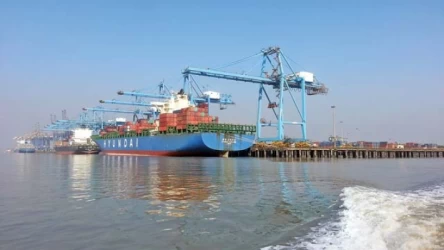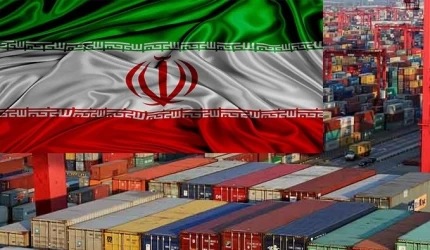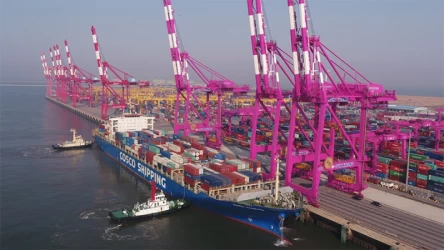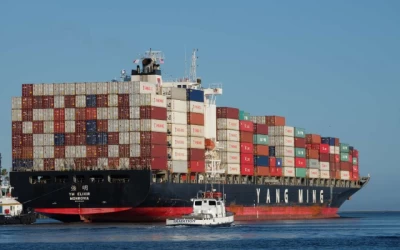Sea transportation of home appliances and furniture from Iran to England
Shipping household goods and personal belongings internationally can be a daunting process, especially when relocating from Iran to the UK. Whether you are moving for work, study, or personal reasons, understanding the logistics of sea freight is crucial to ensure a smooth and cost-effective transition. Sea freight, being one of the most reliable and affordable methods of shipping, offers a feasible solution for transporting large quantities of household items, such as furniture, electronics, and personal belongings, across long distances. This guide will walk you through the entire process of shipping household goods by sea from Iran to the UK.
1. Overview of Sea Freight Shipping
Sea freight is one of the most economical and commonly used methods for international shipping. If you are relocating from Iran to the UK, sea freight offers a reliable and cost-effective solution for transporting your household goods. Unlike air freight, sea freight is slower but much more affordable, especially for large or bulky items. The process involves transporting your goods via large cargo ships that are specifically designed to carry containers of various sizes across international waters.
Sea freight shipping typically includes the following stages:
- Packing and preparation of goods
- Transport to the port of departure in Iran
- Shipping by sea to the UK
- Customs clearance in the UK
- Delivery to your new residence
2. Choosing the Right Type of Shipping Container
When shipping household goods by sea, one of the first decisions you’ll need to make is choosing the right container type. There are two main options:
- Full Container Load (FCL): This option involves renting an entire container. It’s ideal for larger shipments and provides the advantage of more security since your goods are not mixed with other shipments. If you have a significant amount of items, FCL ensures that all your belongings are handled together, reducing the risk of damage.
- Less than Container Load (LCL): If you have a smaller shipment, LCL may be a more cost-effective option. With LCL, you share a container with goods from other customers. While it is less expensive, it can take longer as the container must be consolidated and de-consolidated with other shipments before and after transit.
3. Cost Factors for Sea Freight from Iran to the UK
The cost of shipping household goods from Iran to the UK via sea freight depends on several factors, including:
- Volume and weight of goods: The size and weight of your shipment are key factors in determining the cost. Larger and heavier items will increase the price.
- Container type: FCL shipments are generally more expensive than LCL due to the cost of renting the entire container.
- Shipping route and distance: The distance from the port in Iran to the port in the UK (typically London, Felixstowe, or Southampton) will influence the cost.
- Port fees and handling charges: Ports charge fees for loading, unloading, and handling containers, which will be included in the overall shipping costs.
- Insurance: It’s recommended to insure your goods against potential damage or loss during the transit, which adds to the cost.
- Customs duties and taxes: Depending on the value of your belongings, you may be required to pay customs duties or taxes upon arrival in the UK.
It is important to get a detailed quote from a shipping company or freight forwarder, considering all the above factors, to understand the exact cost of your shipment.
4. Shipping Timeline
Shipping household goods via sea freight from Iran to the UK typically takes between 4 to 8 weeks, depending on the route, the type of container, and any delays that might occur during transit. While sea freight is slower compared to air freight, it is a more economical choice for large volumes of goods.
Once your shipment arrives at the UK port, additional time will be required for customs clearance and final delivery to your residence. The entire process may take anywhere from 6 to 10 weeks in total, including customs procedures.
5. Required Documentation for Shipping Household Goods
To ensure that your goods are cleared smoothly through customs and safely transported, you will need to prepare the appropriate documents. These documents are vital for the shipping and customs clearance process in both Iran and the UK.
Key documents include:
- Bill of Lading: This is the main document issued by the shipping company. It serves as proof of the shipment and specifies the terms and conditions of the transport.
- Packing List: An itemized list of all the goods being shipped, including the quantity, description, and condition of each item.
- Customs Declaration Form: This form is required for the UK customs process and outlines the details of your shipment.
- Proforma Invoice: A document detailing the estimated value of your goods, which may be required by customs.
- Copy of Passport or Visa: Required for identification and verification purposes.
- Proof of Ownership/Use: For items like vehicles or expensive electronics, you may need to provide proof that you have owned or used these items for at least six months before shipping them.
6. Customs Regulations and Import Duties in the UK
When importing household goods into the UK, you will need to comply with UK customs regulations. Fortunately, the UK allows for duty-free entry of used household goods under certain conditions:
- The goods must be for personal use and not intended for resale.
- You must have owned and used the goods for at least six months prior to shipping.
- You must be moving permanently or have been away from the UK for more than 12 months.
It is essential to ensure that you have all the necessary documentation to support your claims for duty-free import. Failure to comply with customs regulations could result in delays or fines.
Some items, such as alcohol, tobacco, and high-value electronics, may be subject to additional customs duties or restrictions.
7. Packaging and Preparing Your Household Goods
Proper packaging is critical for ensuring that your household goods arrive safely and in good condition. Sea freight can expose your belongings to various hazards, including moisture, vibration, and temperature changes. Follow these packing guidelines to ensure the best protection for your items:
- Use durable boxes and containers. Opt for high-quality packing materials to ensure that your items are well-protected.
- Wrap fragile items securely. Use bubble wrap, foam, or other protective materials to shield breakable items such as glassware and electronics.
- Disassemble large furniture. This will help prevent damage and save space in the container.
- Label each box clearly. Make sure to mark fragile items and list the contents for easier identification upon arrival.
- Consider professional packing services. If you’re unsure about packing fragile or valuable items, you can hire professionals who specialize in packing household goods for international shipping.
8. Working with a Freight Forwarder
A freight forwarder can greatly simplify the process of shipping household goods by sea. These professionals handle the logistics, documentation, and coordination of shipments, ensuring that your goods are delivered safely and on time. They can also assist with:
- Booking sea freight and securing a suitable container.
- Coordinating customs clearance in both Iran and the UK.
- Arranging insurance and tracking your shipment.
- Offering advice on packing and documentation requirements.
Choosing a reliable freight forwarder is a wise decision, especially when dealing with international moves and ensuring that your shipment complies with all regulations.
9. Insurance for Your Shipment
Sea freight insurance is highly recommended, as it provides financial protection in case your goods are damaged or lost during transit. You can opt for different types of coverage, such as:
- All-risk coverage: Covers a wide range of potential damages, including accidents, natural disasters, and theft.
- Total loss coverage: Offers compensation if your entire shipment is lost or destroyed.
Discuss your insurance options with your freight forwarder to determine the best coverage for your goods.
10. Final Delivery in the UK
Once your shipment has arrived in the UK and cleared customs, it will be delivered to your designated address. The final delivery method depends on the size of your shipment:
- Door-to-door service: This is the most convenient option, where the shipping company delivers the goods directly to your new home.
- Port-to-door service: If you choose this option, you will need to arrange for transport from the port to your residence.
If you are moving to a remote area, extra time and costs may be involved for final delivery.
Conclusion
Sea freight is an excellent option for shipping household goods from Iran to the UK, especially for large shipments. While the process can take several weeks, the affordability and reliability of sea freight make it an ideal choice for many individuals and families. By understanding the shipping process, preparing your documentation, and working with a trusted freight forwarder, you can ensure that your move is as smooth and efficient as possible.
If you have any specific questions or need further assistance, feel free to ask!











